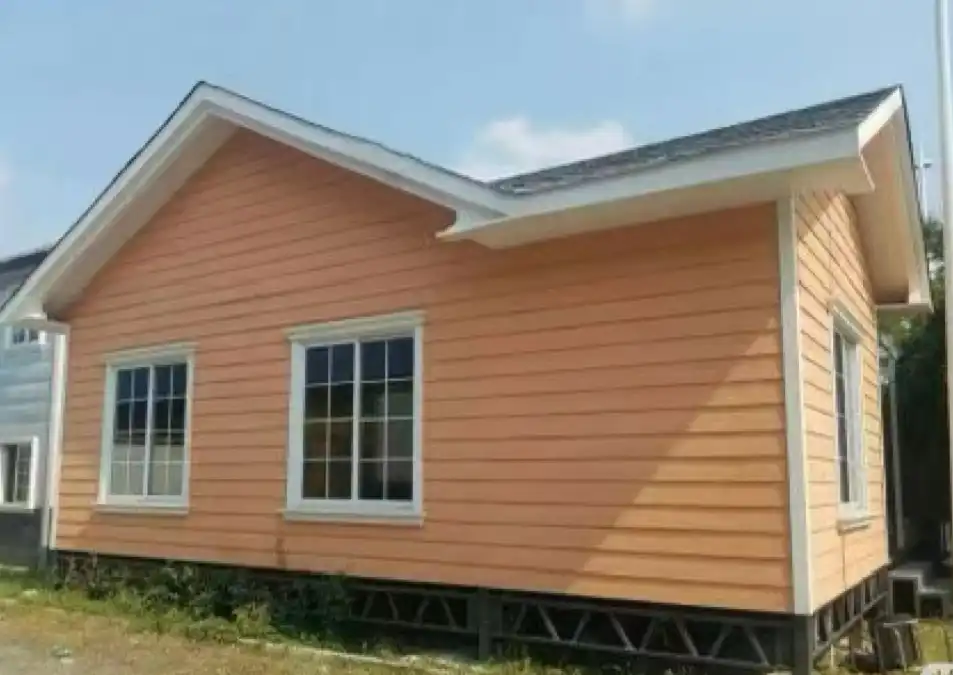The Ingenious Design of Folding House Containers
Understanding the Folding Mechanism
Folding house containers are a marvel of modern engineering, designed to provide the perfect balance between portability and comfort. These structures utilize a clever folding mechanism that allows them to collapse into a compact form for easy transportation. The walls, roof, and floor are typically hinged, enabling them to fold inward and create a flat-pack configuration. This innovative design significantly reduces the container's volume during transit, making it more cost-effective and easier to transport than traditional static containers.
Materials and Construction
The construction of folding house containers involves careful material selection to ensure durability, lightweight properties, and ease of use. Many manufacturers, including Weifang Sandong Building Materials Co., Ltd., use high-quality steel for the main structure, providing strength and longevity. The walls and roof often incorporate insulation materials such as fiberglass, rock wool, or polyurethane (PU) to enhance energy efficiency and comfort. These materials not only contribute to the container's thermal performance but also help in maintaining structural integrity during the folding and unfolding process.
Customization Options
One of the key advantages of folding house containers is their versatility in design and customization. Manufacturers offer a range of options to tailor these structures to specific needs. Customizable features often include:
- Roofing materials and styles
- Insulation types and thicknesses
- Interior layouts and fixtures
- Exterior finishes and cladding options
- Window and door placements
This flexibility allows folding container homes to be adapted for various uses, from temporary camp housing to permanent residential structures.
The Practicality of Moving Folding Container Homes
Transportation Methods
Moving folding house containers is a relatively straightforward process, thanks to their compact form when folded. These structures can be transported using standard shipping methods, including:
- Flatbed trucks
- Container ships
- Rail freight
- Air cargo (for smaller units)
The folded configuration allows for efficient stacking and securing during transit, reducing the risk of damage and optimizing space utilization.
Setup and Deployment
Once the folding container home reaches its destination, the setup process is remarkably efficient. With proper planning and equipment, these structures can be unfolded and made habitable in a matter of hours. The process typically involves:
- Site preparation and leveling
- Unloading the folded container
- Unfolding and expanding the structure
- Securing and stabilizing the expanded form
- Connecting utilities (if applicable)
- Installing any additional features or furnishings
This rapid deployment capability makes folding container homes an excellent choice for emergency housing, remote work sites, or temporary accommodations.Regulatory Considerations
While folding house containers offer exceptional mobility, it's crucial to consider local regulations and building codes when relocating these structures. Some areas may have specific requirements for foundation types, utility connections, or zoning restrictions. It's advisable to consult with local authorities and obtain necessary permits before moving and setting up a folding container home in a new location. This proactive approach ensures compliance and avoids potential legal issues.
Advantages and Challenges of Folding Container Homes
Benefits of Choosing Folding Containers
Folding house containers offer numerous advantages that make them an attractive option for various applications:
- Cost-effective transportation due to compact folded form
- Rapid deployment and setup times
- Versatility in use (residential, commercial, emergency housing)
- Energy-efficient design with proper insulation
- Customizable to meet specific needs and preferences
- Durable construction with a potential lifespan of up to 70 years
- Eco-friendly option compared to traditional construction methods
These benefits have contributed to the growing popularity of folding container homes in both temporary and permanent housing solutions.
Potential Challenges and Considerations
While folding house containers offer many advantages, there are some challenges to consider:
- Initial cost may be higher than traditional static containers
- Requires specialized knowledge for proper setup and maintenance
- Limited interior space compared to conventional homes
- Potential for wear and tear on folding mechanisms over time
- May require additional insulation in extreme climates
- Local building codes and zoning regulations may pose restrictions
Addressing these challenges through proper planning and professional assistance can help ensure a positive experience with folding container homes.
Innovations and Future Trends
The field of folding house containers continues to evolve, with ongoing innovations enhancing their functionality and appeal. Some emerging trends include:
- Integration of smart home technologies for improved energy management
- Development of more durable and lightweight materials
- Improved folding mechanisms for easier operation
- Enhanced modular designs for greater customization
- Incorporation of sustainable features like solar panels and rainwater harvesting systems
These advancements are likely to further increase the adoption of folding container homes in various sectors, from urban housing solutions to disaster relief efforts.Conclusion
Folding house containers represent a significant leap forward in portable and flexible living spaces. Their ease of movement, coupled with rapid deployment capabilities, makes them an attractive option for a wide range of applications. While challenges exist, the benefits of these innovative structures often outweigh the drawbacks, particularly in situations where mobility and quick setup are crucial. As technology advances and designs continue to improve, folding container homes are poised to play an increasingly important role in addressing housing needs across various sectors.
For those interested in exploring folding container homes or other exterior cladding and facade solutions, Weifang Sandong Building Materials Co., Ltd. offers a comprehensive range of products and expertise. To learn more about our offerings and how they can benefit your projects, please contact us at info@sdqsc.com.